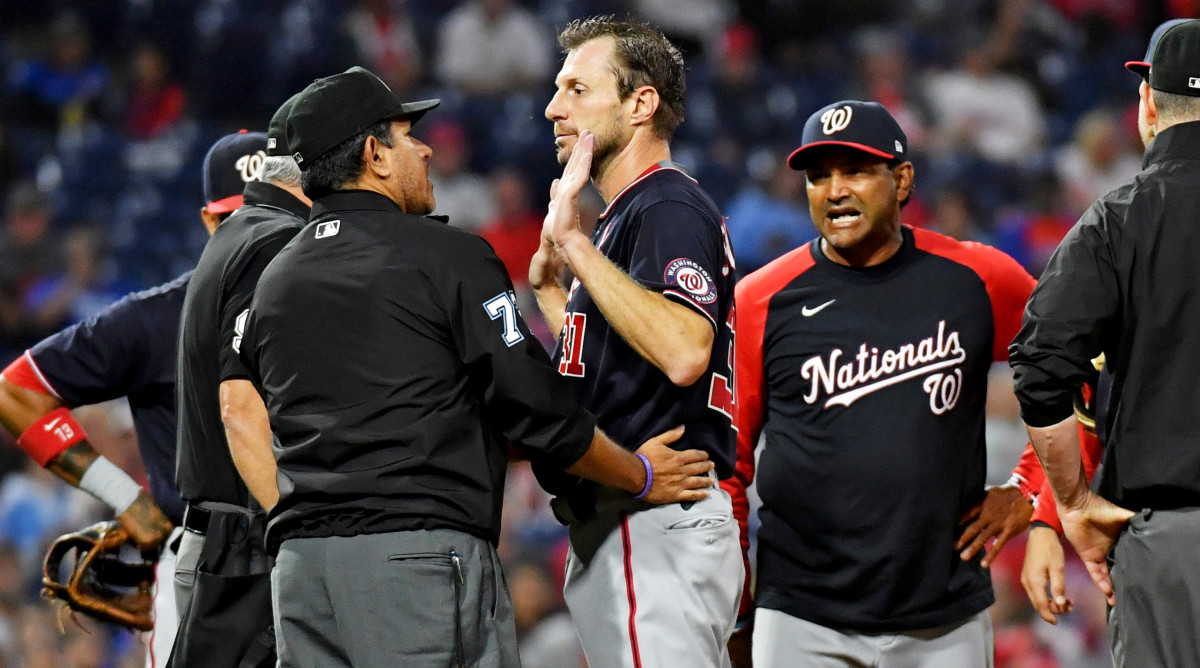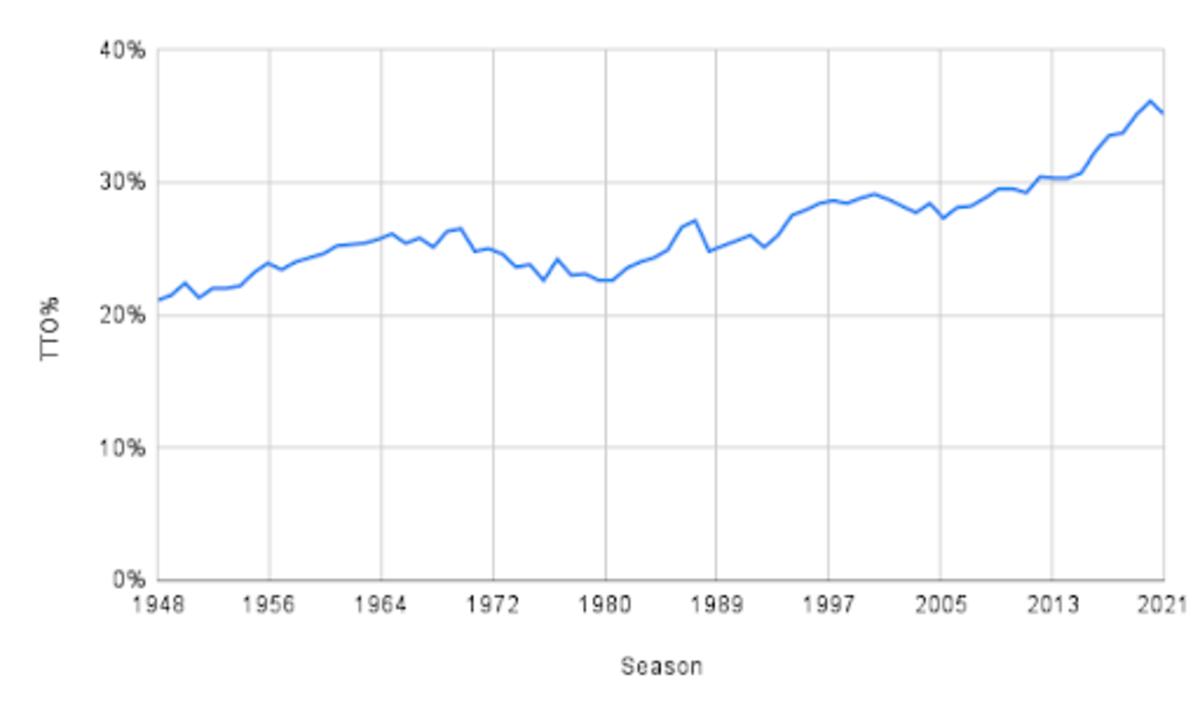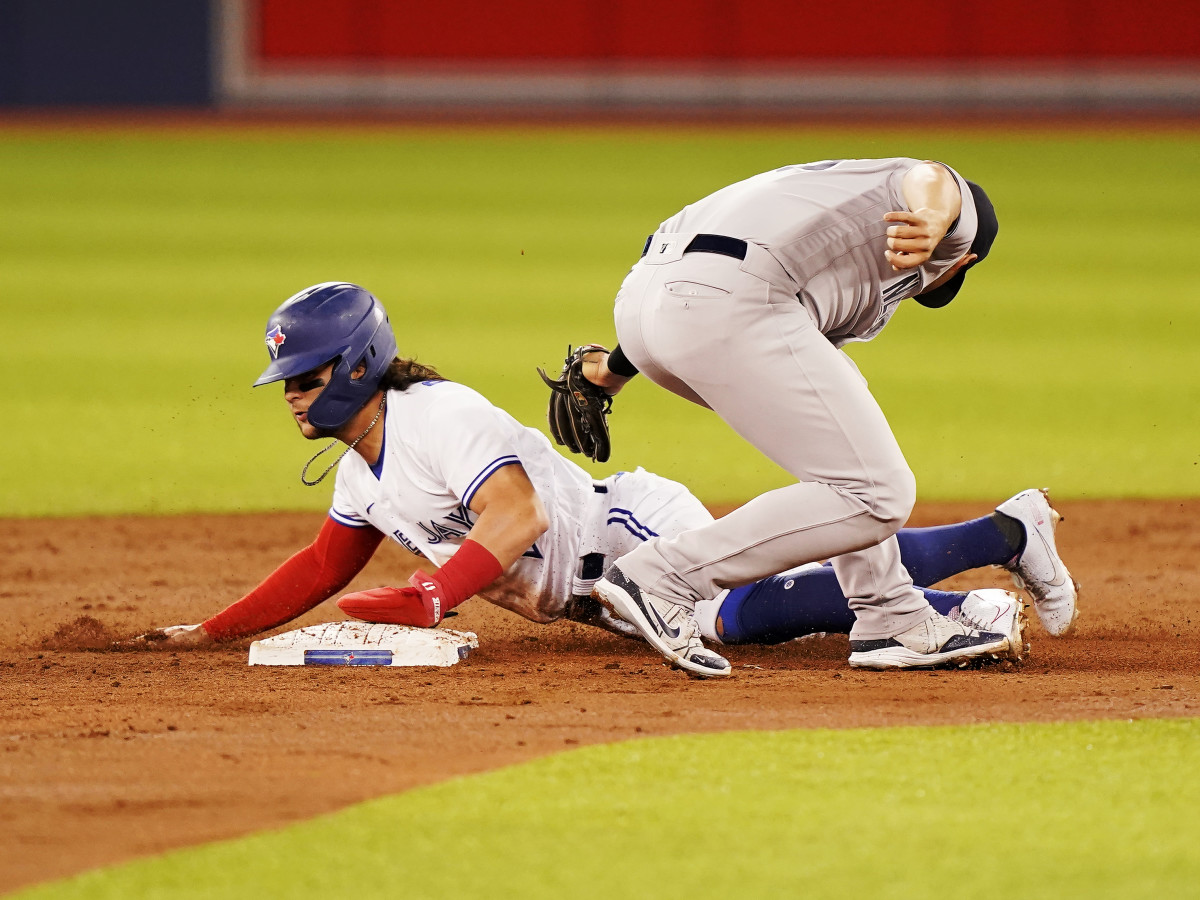Five Takeaways From This Year in Baseball

What could be a better time for reflection than the end of the year? Easy: the end of the year in a game that’s locked out. Here are five things we learned from MLB in 2021:

1. Sticky-stuff enforcement had real—but not overwhelming—effects.
Remember when it looked like this one would be the story of the season? There were, oh, three days when it seemed as if the crackdown on sticky stuff might turn into a huge, disruptive mess. (A shout-out to Max Scherzer and Sergio Romo for their efforts here.) And then everyone got used to it. The umpires’ checks of pitchers became routine and faded into the background. But even if the enforcement itself became easy to ignore, its effect on the game was very, very real. The league’s hope in cracking down on foreign substances was that pitchers would look a little more human and, in turn, flagging offenses would get a boost—and that bore out. Once the new standards were announced on June 15, league statistics began to shift, indicating that pitchers ditched their substances immediately, even though the umpires would not begin their checks for another week. Here’s how MLB-wide offense changed with the news of the crackdown:
BA | OBP | SLG | |
|---|---|---|---|
Before June 15 | .238 | .313 | .398 |
After June 15 | .248 | .320 | .419 |
That uptick in league batting average was enough to cover the distance from “worst offense since the Year of the Pitcher” to “notably bad but far less frighteningly weak.” (That’s an important difference!) Not all of that can be attributed to the crackdown—offense gets a boost every summer as the weather heats up—but the boost this year was a little more extreme than it had been in recent years. And if you’re in search of more striking evidence of the impact? The tell-tale sign of foreign-substance use is an uptick in spin rate, and just as league spin rate had climbed steadily as sticky-stuff use had increased over the last few years, it dropped notably as soon as the crackdown came into place. The MLB-wide spin rate after June 15 was the lowest it had been since 2016:
Average Spin Rate (rpm) | |
|---|---|
Before June 15 | 2,272 |
After June 15 | 2,209 |
In the end, sticky-stuff enforcement was not the story of the season. By July, you might not have even noticed that it was happening at all. But it made a real difference on the game all the same.
2. Did we hit the ceiling on three true outcomes?
Chances are that you already have a decent handle on the discussion about how infrequently the ball is put in play. It’s become almost impossible to escape—obvious in everything from a glance at league statistics to the grousing on Sunday Night Baseball. This past year offered more of the same in that department. But there was a new wrinkle to the discourse.
As you’d probably expect, MLB’s three true outcomes percentage has been climbing steadily in recent years. (That’s the proportion of plate appearances that end in a walk, strikeout or home run, or, in other words, a measure of how often the ball is not put in play.) The number hit a new record each season from 2015 to 2020. But that streak ended in 2021: The TTO% finally stopped increasing.

The decrease was slight (36.1% to 35.1%), and it still left the rate of three true outcomes historically, dramatically high. It has to be taken with a huge grain of salt in that it was a decrease from 2020, which, as you may recall, was a bit unusual: The shortened season placed all kinds of unique stresses on pitchers that were reflected in various statistics. But it was a decrease all the same! And it came in every category—the rates of walks, strikeouts and home runs were all down from their 2020 highs in 2021.
This doesn’t tell us anything definitive about what those numbers will do in 2022. It certainly doesn’t offer any resolution to the problem of the ball not being put in play enough. But it does represent what might be an interesting turning point: Has MLB hit a natural ceiling of sorts on this issue? It just might have.
Sign up to get the Five-Tool Newsletter in your inbox every week during the MLB offseason.
3. Base stealing is at its lowest level in decades—but it’s smarter than ever.
Here’s another development in a long-simmering conversation. The stolen-base rate has been steadily declining for a while now, and in 2021, it reached its lowest point in half a century. But that came alongside an interesting milestone—a mark of just how smart teams have gotten about base stealing.
There’s some conventional wisdom that a stolen base attempt is worthwhile only if the chance of success is above 75%. For years now, as teams have gotten increasingly picky about when to steal, the league-wide stolen-base percentage has been closing in on that number. And in 2021, for the first time, MLB crossed that threshold: SB% sat at a record-high 76%. Maybe base stealing doesn’t look like a dying art so much as it looks like an ever-optimizing science.

4. It took a lot of players to get through this year. A lot.
It was always going to be tricky to bounce back from a pandemic-shortened, scrambled season like last year. There’s no blueprint for that, and as the effects of 2020 continued to reverberate through 2021, it stood to reason that part of the answer would be bringing in extra players to manage workloads and accommodate injuries. Add that to 26-man rosters, pre-existing trends of maximizing every spot by shuttling players up and down, and… you can see where this is going.
MLB used 1,373 batters and 909 pitchers this season—both records, unsurprisingly, and by considerable margins. One way to look at it: The league needed 78 more pitchers in 2021 than it did in 2019, a difference that was greater than the year-over-year change from 1968 to 1969, when expansion added four teams. If you took note of MLB celebrating its 20,000th player in history this season (er, kind of), know that it’s already jump-started the groundwork for the next 20,000.
5. This year was a glorious reminder not to take baseball for granted.
The additional players were, of course, just one small way in which the 2021 season differed from 2020. After a year of empty stadiums, artificial soundtracks and logistical nightmares, MLB was able to regain some of its core functions in 2021. This season gave us back baseball as community—as a gathering place, physical and otherwise, and as a shared reference point—and baseball as calendar. Perhaps we shouldn’t have needed a reminder here. But we all got one, anyway—of how incomplete baseball can feel without those functions and how special it is to have them back.
More MLB Coverage:
• Top 10 Moments From the 2021 MLB Season
• Can MLB’s Biggest Disappointments of 2021 Return to Form?
• Which Surprising Standouts Can Repeat in 2022?
• Why Jimmy Rollins Belongs in the Hall of Fame
• MLB Is Not Even Trying to End the Lockout
